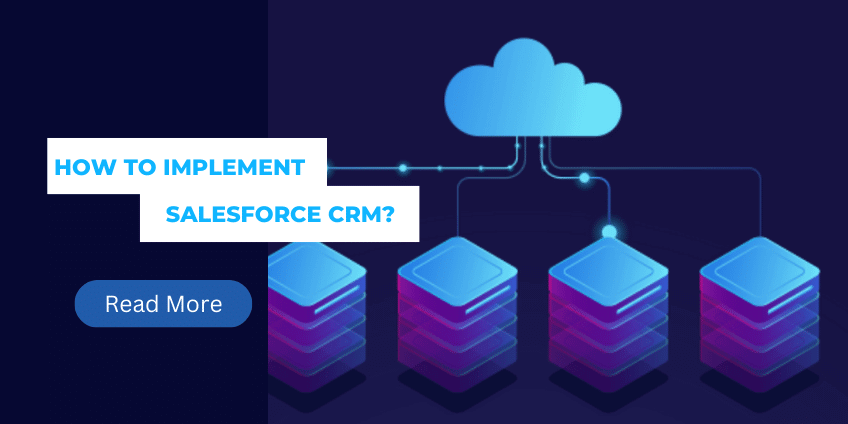Tableau Quick Start Implementation
Are you ready to harness the power of data visualization to drive your business forward? If so, then embarking on a Tableau Quick Start Implementation could be the game-changer you’ve been seeking. In today’s fast-paced business environment, timely access to actionable insights is crucial for making informed decisions and staying ahead of the competition. With Tableau’s Quick Start Implementation, you can swiftly deploy this powerful analytics tool and unlock its full potential to transform your data into meaningful, actionable intelligence. Join us as we dive into the essential steps and best practices for a successful Tableau deployment, empowering your organization to thrive in the data-driven era.
Understanding the Tableau Quick Start Strategy:
The Tableau Quick Start Strategy is a comprehensive approach designed to facilitate the rapid deployment and adoption of Tableau within organizations of all sizes. At its core, this strategy emphasizes simplicity, efficiency, and user empowerment. By streamlining the implementation process and providing users with the necessary tools and resources, Tableau enables businesses to quickly harness the power of data visualization and analytics to drive better decision-making and achieve their goals.
For further insight into rapid deployment strategies, you may find the Digital Ocean Quick Start Implementation guide helpful.
Key Components of Tableau Quick Start Implementation
1. Understanding Your Data Needs
The first step in a Tableau Quick Start Implementation is understanding your organization’s data needs. Whether you’re looking to analyze sales trends, track customer behavior, or monitor operational performance, it’s crucial to define your goals before diving into the implementation process. By aligning your Tableau setup with your specific business objectives, you can ensure that your data visualizations provide the insights you need to drive success.
2. Setting Up Tableau Environment
A Tableau Quick Start Implementation involves setting up your Tableau environment quickly and efficiently. This includes configuring your Tableau Server or Tableau Online, connecting to your data sources, and establishing the necessary security protocols. The goal is to create a stable and scalable environment that allows your team to start building dashboards and reports immediately. By focusing on essential configurations and avoiding unnecessary customizations, a Tableau Quick Start Implementation accelerates the deployment process, allowing you to start using Tableau in days rather than weeks.
3. Building Essential Dashboards
Once your environment is set up, the next step in a Tableau Quick Start Implementation is to build essential dashboards that align with your business goals. This might include sales performance dashboards, customer analytics dashboards, or operational efficiency dashboards. By prioritizing the creation of these key dashboards, you can ensure that your team has access to the most important insights from day one. Additionally, building these dashboards provides an opportunity to train your team on Tableau’s features and functionalities, ensuring they can create and modify dashboards independently in the future.
Preparing for Implementation:
1. Assessing Data and Infrastructure Requirements
Before implementing Tableau, it is crucial to assess your organization’s data and infrastructure requirements. Identify the data sources you need to connect to, evaluate their compatibility with Tableau, and ensure that your infrastructure can support the required hardware and software configurations.
2. Installing Tableau Desktop and Server
To implement Tableau Quick Start, start by installing Tableau Desktop and Server. Tableau Desktop allows you to create visualizations and dashboards, while Tableau Server enables collaboration and sharing within your organization. Ensure that the installation process follows the recommended guidelines provided by Tableau.
Configuring Tableau for Your Organization:
1. Connecting to Data Sources
Once Tableau is installed, connect it to your data sources. Tableau supports a wide range of data connectors, including databases, spreadsheets, cloud services, and more. Establish connections to relevant data sources and verify that the data is accurate and up-to-date.
2. Setting Up User Roles and Permissions
To ensure proper data access and security, configure user roles and permissions within Tableau. Define roles based on the responsibilities and access levels of your users. Grant permissions accordingly, allowing users to view, edit, or publish content as needed.
Designing Effective Dashboards and Visualizations:
1. Planning Your Dashboard Layout
Before designing dashboards, plan the layout to optimize data visualization. Consider the target audience, their requirements, and the key insights you want to convey. Use wireframes or mockups to sketch out the structure and arrangement of elements in your dashboard.
2. Creating Interactive Visualizations
Tableau offers a wide range of visualization options, including charts, graphs, maps, and more. Select the appropriate visualization types based on the data and insights you want to showcase. Use Tableau’s interactive features, such as filters and parameters, to enhance user engagement and exploration.
3. Implementing Best Practices for Data Visualization
Follow best practices for data visualization to ensure clarity and effectiveness. Consider factors like color schemes, labeling, hierarchy, and storytelling techniques. Tableau provides various formatting options to enhance the visual appeal and readability of your dashboards.
Implementing Advanced Features:
1. Utilizing Parameters and Filters
Tableau allows users to create parameters and filters to enhance interactivity and flexibility. Parameters enable dynamic calculations and user-driven inputs, while filters help users focus on specific data subsets. Understand how to implement and customize these features to meet your analysis requirements.
2. Incorporating Advanced Calculations
Tableau offers a powerful calculation engine to perform complex data manipulations and calculations. Leverage Tableau’s calculation functions, table calculations, and level of detail (LOD) expressions to derive valuable insights and perform advanced analytics.
3. Implementing Data Blending Techniques
When dealing with multiple data sources, Tableau’s data blending techniques allow you to combine and analyze data from different sources seamlessly. Learn how to establish relationships between disparate data sources and perform cross-database joins to create comprehensive visualizations.
Ensuring Data Security and Governance:
1. Implementing Data Security Measures
Protecting sensitive data is paramount. Implement data security measures such as user authentication, encryption, and row-level security. Tableau provides robust security features to safeguard your data and ensure compliance with privacy regulations.
2. Enforcing Data Governance Policies
Establish data governance policies to maintain data quality, consistency, and integrity. Define data standards, naming conventions, and data validation rules to ensure accurate and reliable visualizations. Regularly review and update these policies as your organization evolves.
Troubleshooting and Optimization:
1. Common Challenges and Solutions
While implementing Tableau, you may encounter common challenges such as data source connectivity issues, performance bottlenecks, or visualization errors. This section addresses potential issues and provides troubleshooting steps and solutions to overcome them effectively.
2. Performance Optimization Tips
Optimizing Tableau performance is essential for smooth and efficient data visualization. Discover techniques to improve query performance, enhance dashboard loading times, and optimize workbook design. Apply performance best practices to provide a seamless user experience.
Additionally, to expand your understanding of cloud-based analytics, the Cloud Services Implementation article provides valuable context.
Benefits of Tableau Quick Start Implementation
1. Rapid Time to Value
One of the primary benefits of a Tableau Quick Start Implementation is the rapid time to value. By focusing on essential features and streamlining the setup process, organizations can start using Tableau to generate insights much sooner than with a traditional implementation. This quick turnaround is particularly valuable for businesses that need to make data-driven decisions quickly to respond to market changes or capitalize on new opportunities.
2. Cost-Effective Solution
A Tableau Quick Start Implementation is also a cost-effective solution for organizations looking to implement a powerful data analytics tool without breaking the bank. By limiting the scope of the initial deployment and focusing on critical features, businesses can reduce implementation costs while still gaining access to Tableau’s robust capabilities. This makes it an ideal option for small to medium-sized businesses or departments within larger organizations that need a data visualization solution but have limited resources.
Conclusion
A Tableau Quick Start Implementation offers a streamlined and efficient approach to deploying Tableau within your organization. By focusing on essential features, setting up your environment quickly, and providing adequate training, you can ensure a successful rollout that delivers immediate value. Whether you’re a small business looking to harness the power of data or a department within a larger organization seeking to improve decision-making, a Tableau Quick Start Implementation is the key to unlocking the full potential of your data analytics capabilities.
Author Spotlight

Chandan K. Sharma
An entrepreneur and author with a deep passion for technology, CRM, and digital marketing. Chandan is a versatile content creator and expert in CRM, sales automation, and marketing automation. He combines creativity with strategic thinking to deliver innovative, scalable solutions that help businesses streamline operations and drive growth.
